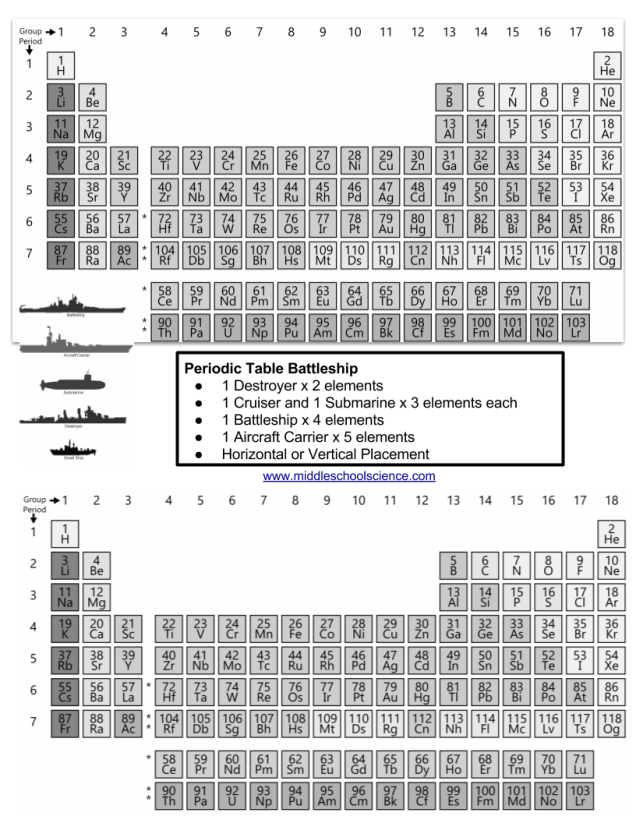We are having a tech-free day and thought between Transition Metal Bingo and Periodic Table Battleship, my students will really get to know how to find elements on the Periodic Table. We are just learning about how the Periodic Table is arranged according to Families, how to determine Shells and Valence Electrons, and how to draw Bohr Diagrams and Lewis Structures. Click on the links to for detailed lesson information.
I wanted a simple handout for my students to use and that was easy to manage. Most of the Periodic Table Battleship games involve expo markers and file folders, but that is time consuming to set up and clean up. Using this handout, they can use two different colored highlighters, crayons, colored pencils, etc. to keep track of their boat placement, hits, and misses. I have ‘privacy screens’ that we use during tests and quizzes that they can use to keep their papers hidden from their opponent.
- Periodic Table Battleship Handout 2018: – Click on the link to download and print the PDF
- Periodic Table Battleship Handout 2018 Color – Click on the link to download and print the PDF in color
- Periodic Table is from Wikipedia
















